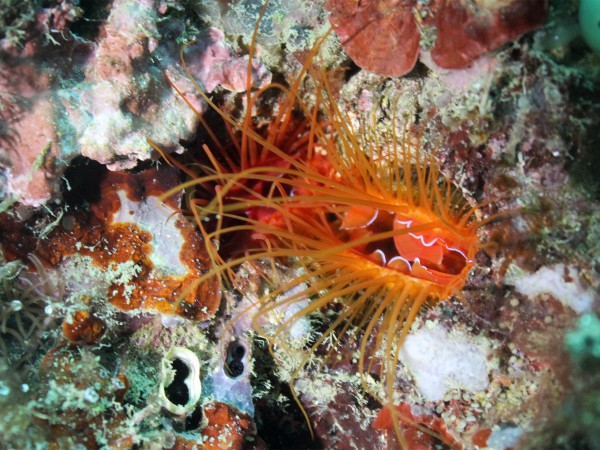A graduate student at the University of California at Berkeley has uncovered the mystery to what allows the electric or disco clam to dazzle us with its light show. You would think there is some bioluminescence or other chemical reaction taking place inside the creature, but in fact it is just reflecting ambient light — just like a mirrored disco ball.
Lindsey Dougherty, the graduate student at the University of California at Berkeley, devoted her PhD to uncovering this mystery after encountered the clam during a dive in Indonesia. As we noted before, the light show was long thought to be caused by bioluminescence, but research in the 1990s discovered it was actually a matter of scattering ambient light.
Taking it a step further, Dougherty and her team uncovered the light show was due to the structure of its mantle that contained two separate and distinct tissue types that give it the ability to scatter the ambient light. The secret ingredient to the flashing? Seems that the clam has small sphere of silica in the mantle.
“Silica is very rarely used by animals but has a high refractive index, which makes it a great reflector,” said Dougherty.
There is a bit of a yin and yan relationship in this story. The silica side reflects while the other side of the mantle is designed to absorb light, resulting in the alternating, flashing effect we see. When the bivalve opens and closes the mantle to feed, what results is the electric light show. Using high-speed video and other tools, the team was able to uncover this mystery.
“The tissue furls and unfurls back and forth to expose the two distinct sides about twice a second,” explained Dougherty. She added that when the animal is startled ”their flash rate jumps up to four times a second.”
[via NatGeo]




